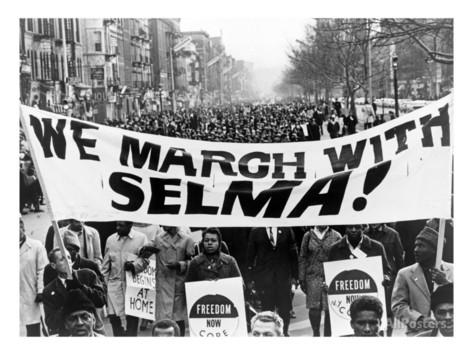February is Black History month and as an African American this month holds great significance for me. Not only is February a time for me to meditate on the struggles and victories of my people, but it is a time for me to contemplate additional ways that my people can continue to thrive and push for more equality, justice and freedom. In light of the recent shootings and open discrimination towards African Americans in the United States, I have seen New York City step up time and time again to push for the rights of not only African Americans, but for the rights of a plethora of diverse races. This is very comforting to me. While much still needs to be done to secure full equality and justice for African Americans, I have decided to take a look into the history of New York City to see where we stood as a state in the narrative of African Americans. Cities like Selma and Birmingham are remembered as key battlefields for Civil Rights, yet New York to my pleasant surprise also fought, and New York continues to stand right here beside us:
1. The Underground Railroad Once Ran through NYC
(Yes! You can still visit)

Atlas Obscura – Underground Railroad Plymouth Church Brooklyn
A vast network of churches, community sites and safe houses were used guide over 100,000 enslaved people to freedom. Rewind time to Brooklyn, NY 1849 and walk through the tunneled basements beneath the Plymouth Church of the Pilgrims, the same tunnel that Harriet Tubman and countless slaves travelled through while escaping enslavement. The church that provided haven was led by abolitionist Henry Ward Beecher (the brother of Harriet Beecher Stowe, author of Uncle Tom’s Cabin), a clergyman and antislavery advocate, who fought against the injustice of slavery and viciously contended against the Fugitive Slave Laws.
Plymouth Church of the Pilgrims (Underground Railroad Stop)
Open to the Public:
75 Hicks St
Brooklyn, NY 11201
Phone: 718 624 4743
Website: http://www.plymouthchurch.org/
2. The Secret Behind Harriet Tubman’s House

“I was the conductor of the Underground Railroad for eight years, and I can say what most conductors can’t say — I never ran my train off the track and I never lost a passenger.”– Harriet Tubman.
This heroic woman is my most adored abolitionist female figure. Harriet Tubman not only ushered countless enslaved peoples to freedom but she was full of wit, bravery, compassion and personality. Tubman’s most honorable act and the one that stuck with me the most as a child is that – after escaping enslavement in 1849, she risked her life to go back and help others. In several attempts to rescue her family and other enslaved comrades, Harriet Tubman constantly left the safety of Maryland (the free state she had escaped to) to travel through Southern swamps aided by nothing but the light of the moon. Bounties were placed on her head in numerous states, and she was wanted dead or alive, but the feds were never able to catch her. Harriet Tubman soon become known as “The Moses of her People.” She made over 19 trips from the North to the South, escaping enslavement while not losing a single one of her passengers. She moved to Auburn, NY in 1857 where she was given a two-story brick home by William H. Seward, the US Senator from New York. Harriet Tubman’s home still stands in Auburn, NY today.
Harriet Tubman’s Home – (Open to the Public)
Address: 180 South St Auburn, NY 13021
Phone: (315) 252-2081
Hours: Tue-Fri : 10AM – 4PM
Sat: 10AM-3PM
Website: http://www.harriethouse.org
3. New York Marched with Selma (Harlem, 1965)

Civil Rights Marchers Carrying Banner “We March with Selma!”, Harlem, New York City, 1965 Stanley Wolfson—WT&S/Library of Congress, Washington, D.C. (LC-USZ62-135695)
The Selma to Montgomery march was a political march against the discriminatory Jim Crow laws and the restrictions on minority voting rights. The march on Selma was headed by Reverend Dr. Martin Luther King and had a turnout of over 25,000 joiners. The march played a pivotal role in the American Civil Rights Movement and it led the way to the passage of the Voting Rights Act of 1965. As the march on Selma was underway, thousands bravely took to the streets of Harlem, New York City bearing signs “We March With Selma” standing in solidarity with Martin Luther King and all those on the frontlines of freedom.
New York City has been a long time friend to and advocate of the voiceless and oppressed. While we still have much ground to make as a country and as a state, I am proud to live in a diverse metropolitan that has its roots in freedom, justice and above all love.


